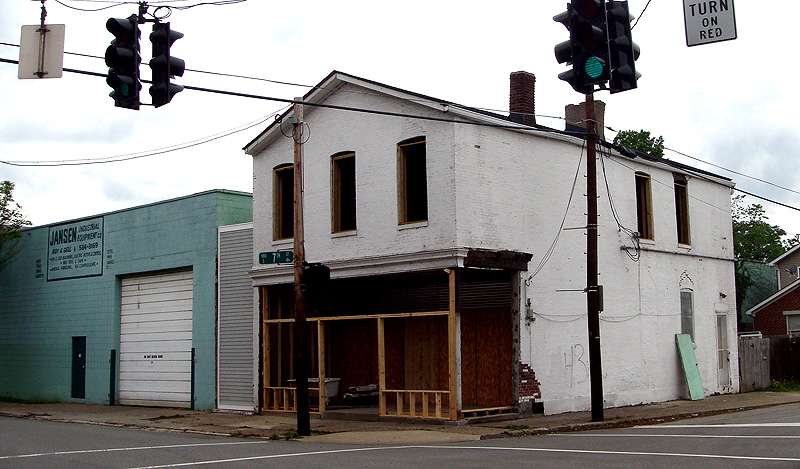The Louisville Eccentric Observer has a great piece today on urban infill projects that are rapidly changing the face of Louisville. These small-scale projects such as Shine Properties’ Limerick rehab project featured in the article have carried on despite the economic downturn that has grounded most major projects.
Here’s a sample from the article:
Before Shine acquired it last year, this property at 1100 S. Seventh Street was a veritable shithole. Extensive water damage had virtually destroyed the building’s interior walls and, subsequently, its foundation, most of which had to be replaced. Mounds of baking-related junk and other kipple were left to rot indefinitely inside. If there were any diamonds to be found in this rough, it would certainly take keener eyes than most.
This probably has something to do with Limerick’s curious geography; located just south of Broadway, nestled between the western tip of Old Louisville and that great psycho-economic barrier known as Roy Wilkins Boulevard, it exists beyond the city’s traditional zones of major capital investment. Originally named after the Irish immigrants who built the nabe’s characteristic handsome brick walk-ups, it is—like many of Louisville’s centrally located environs—currently home to folks who are poorer, less educated and blacker than most Louisvillians-at-large. It also boasts a plethora of old, cheap buildings, most of which can be had for under $150,000. Despite this seemingly low overhead, from a cynical dollars-and-cents perspective there’s little to infer as to why Gilles & Co. would even pick a building like this, in a neighborhood like Limerick, amid an economic crisis such as ours, for what is undoubtedly a labor of love. After all, this isn’t Fourth Street, and Shine Properties, is a far cry from the Cordish Cos.
The term for this is infill, the use of vacant land and/or property within a built-up area for further construction or development, especially as part of a neighborhood preservation or limited growth program. Infill is integral to stitching blighted communities back to more prosperous ones.
The article is quite in depth covering what makes these developers tick, why infill is so important, and a few observations from yours truly. Check out the entire article here, it’s well worth a read, especially if you care about neighborhood rehab. While the eye-catching mega-projects are attempting to transform downtown, these smaller infill and rehab projects are improving our urban neighborhoods.
- Raise High The Roof Beam, Louisville (LEO)
- Limerick Seeing Rebirth One Building At A Time (Broken Sidewalk)


